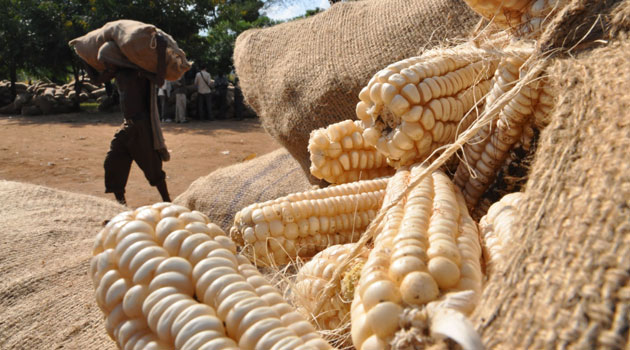The highest average harvested crops in rural Zimbabwe was white maize with each farmer reaping at least 237.5kg.
The low yields have been attributed to an erratic rainfall pattern that the southern African country experienced during the 2021/2022 farming season.
Harvested tubers and tobacco during the same period were on average 35kg per farmer.
“The highest average harvested crops were maize (237.5kg), tubers (35kg) and tobacco (35kg),” according to a recent survey carried by the Zimbabwe Vulnerability Assessment Committee (ZimVAC) 2022 Rural Livelihoods Assessment Report.
The assessment committee noted that due to the erratic rainfall pattern in Zimbabwe and most parts of the southern African region, most farmers harvested below average with a national target of 4.4kg for orange maize; 6.3kg – cow peas; 27kg – sorghum; 17.1 groundnuts; 1.6kg – finger millet, 17.1 – roundnuts.
Other national estimated figures are; 9.2kg – pearl millet; 8.2kg – sugar beans; 5.2kg – soya beans; 1.2 – sesame seeds; 9.7kg – cotton; 0.2kg – paprika; 5kg – sunflower; and 0.4kg wheat.
Mashonaland West province had the highest harvest white maize crop per farmer at 524.1kg while the drought-prone Matabeleland South region had the least at 89.2kg.
“About 20.9% of households used quality certified seeds (during planting). About 33.7% of households did not adopt any water and soil conservation strategies. Uptake of value addition was low as 46% of households did not practice it. At least 27% of households practiced drying, packaging and storage.”
Meanwhile, according to ZimVAC, the proportion of households that did not own cattle in rural communities was 63%, and only 17% of households had more than five cattle per household.
“Mashonaland Central (73%) and Mashonaland West (73%) had the highest proportion of households which did not own cattle. Midlands (28%) had the highest proportion of households owning more than five cattle per household.
“A high proportion of households (82%) did not own draught cattle. Only 2% of the households owned more than 5 draught cattle per household. A high proportion of households (92%) did not own donkeys. Matabeleland South (70%) had the least proportion of households without donkeys, followed by Matabeleland North (85%).”
ZimVAC added: “About 97.9% of the households did not own sheep. Only 1.1% of the households owned more than five sheep. Matabeleland South (3%) had the highest proportion of households that owned more than five sheep per household.
“At least 57% of the households did not own goats while about 22% of the households owned more than five (5) goats. Matabeleland South (44%) and Matabeleland North (29%) had the highest proportion of households which owned more than five (5) goats.
At national level, 70% of the households owned poultry. The highest proportion of households owning poultry was in Midlands (82%) and the lowest was in Mashonaland Central (53%). Pig and rabbit ownership was very low.”
Meanwhile, Zimbabwe has a national 202 irrigation schemes, which are fully functional and 82 non-functional.
Masvingo province has the highest functional irrigation schemes at 45 while Mashonaland East province has 22 non-functional irrigation schemes.
ZimVAC is a consortium of the government, non-governmental organisations, United Nations and academia. It was established in 2002 and is led and regulated by the government.
Its mandate is to promote a multi-sectoral response to food insecurity and nutrition problems in a manner that ensures that every Zimbabwean is free from hunger and all forms of malnutrition.








